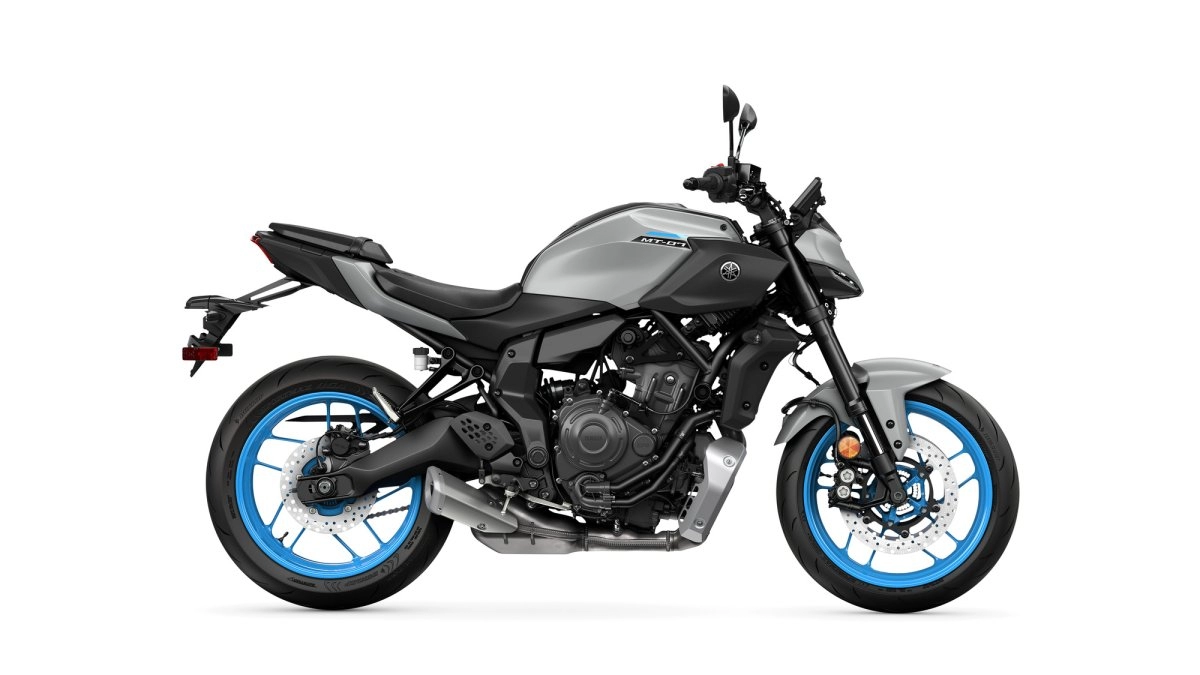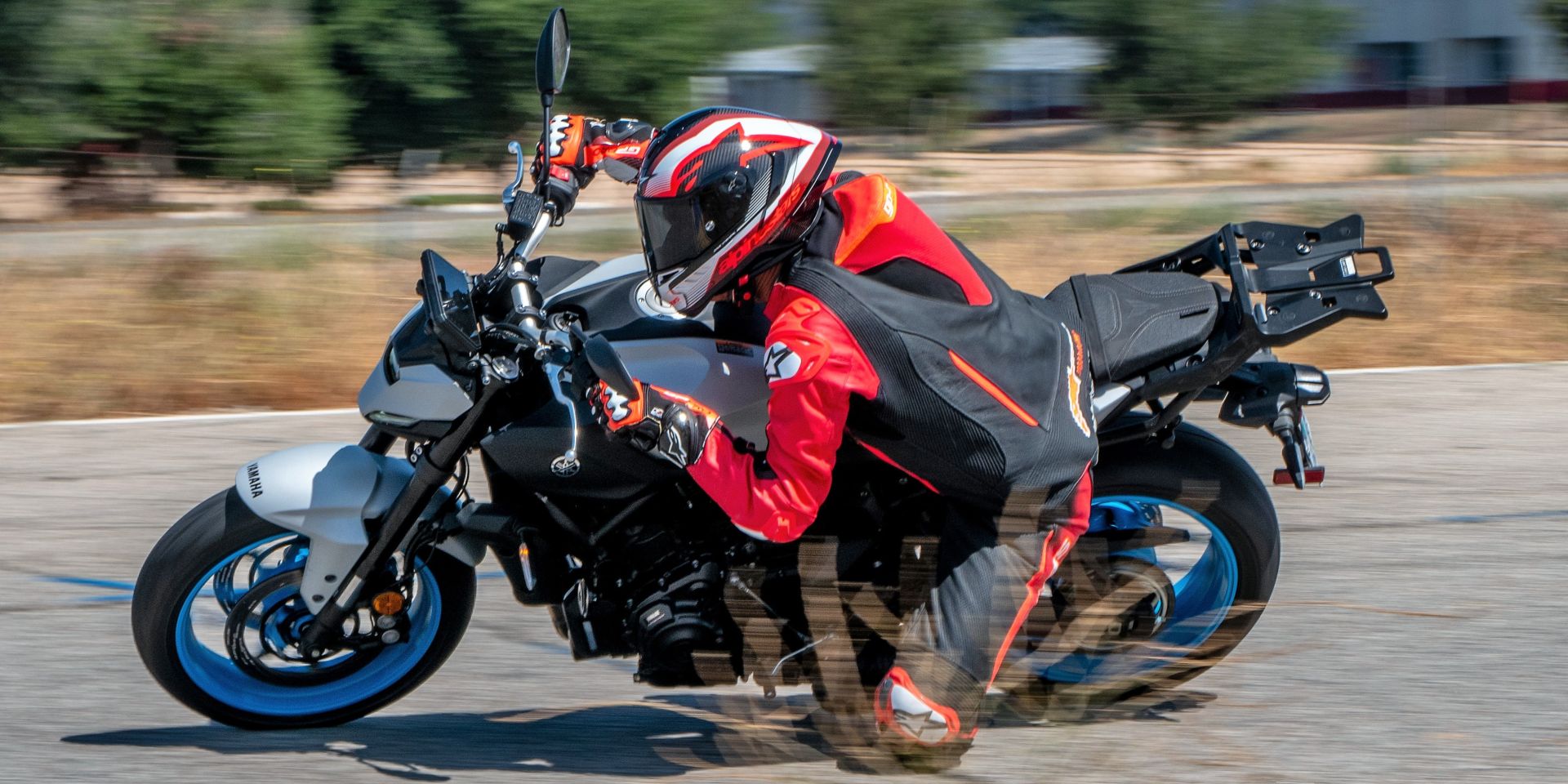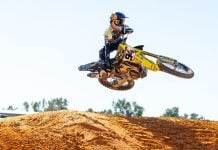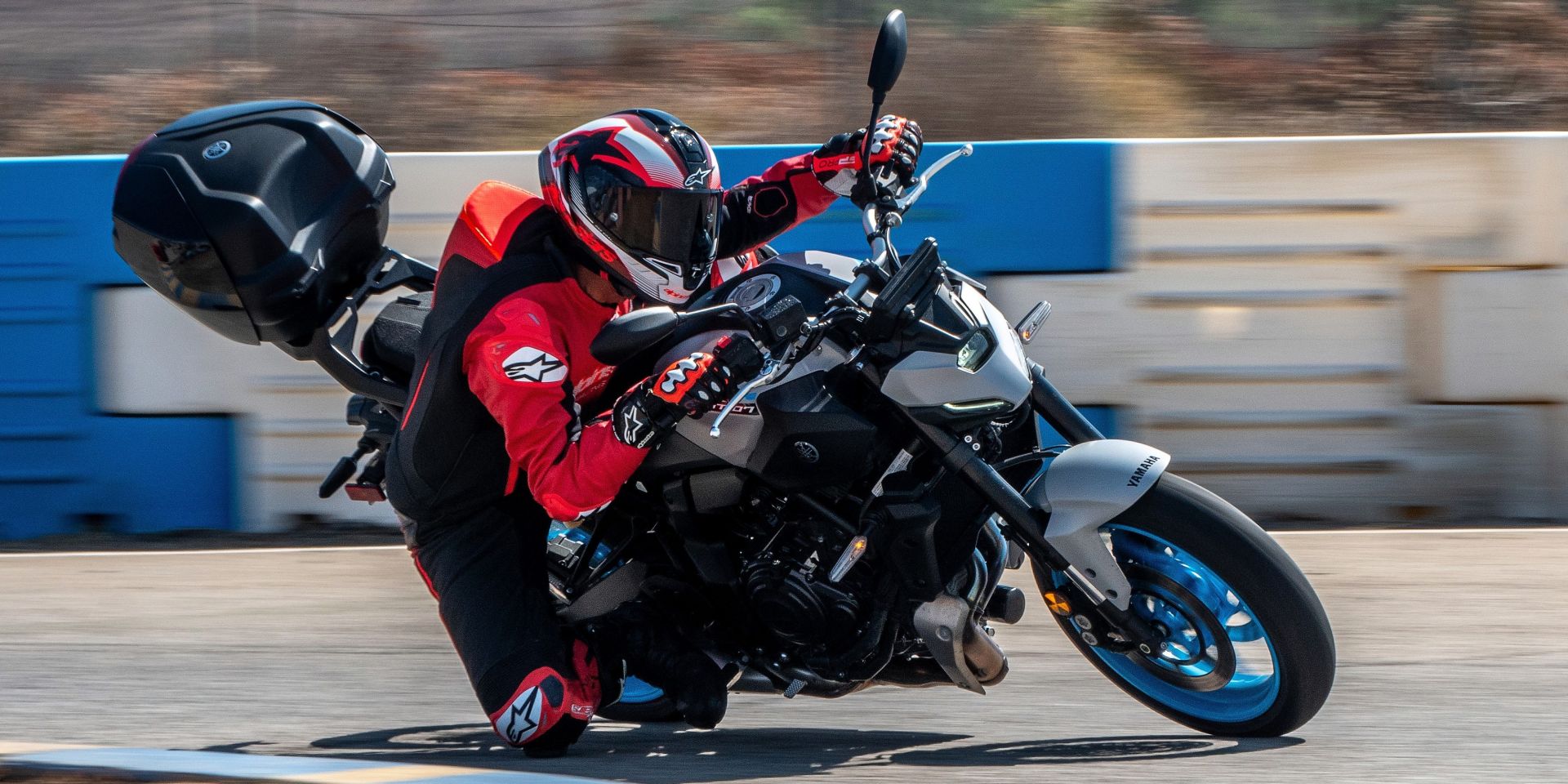By Michael Gougis
The second time the handlebars got light in my hands, I realized that the ride was going to be entertaining. I was still in the parking lot at Yamaha’s Southern California campus, and I hadn’t even gotten to the exit gate yet.
Now, admittedly, part of this was due to how I’d packed the thing. The new 2025 MT-07 I’d borrowed for a ride up to the MotoAmerica Superbike Speedfest at Monterey Presented by Law Tigers came with baggage–and no, I don’t mean the Yamaha employee who was coming along for a much-needed two-wheel getaway on another MT-07. Specifically, my ride had a hefty 34-liter tail case mounted high and far back, which when grossly overloaded by yours truly certainly contributed to the tendency of the front end to get light on the throttle. All on its own, the bike was peppy and responsive on the gas, and I was looking forward to the long ride on twisty roads and fast highways.
Exactly 888 miles and four days later, I was back at home, and I was still impressed by the newest (and heavily revised) version of Yamaha’s middleweight standard. I know, Yamaha calls it a hyper-naked, but there’s nothing hyper about 72.4 horsepower. But decades ago, basic street motorcycles used to be simple, capable of doing anything a rider asked reasonably well, and we called them standards. Think of the MT-07 as the spiritual descendant of the much-loved XJ550, or Seca, of the early 1980s. That middleweight Inline-4 served as a commuter, a tourer, and a pretty decent track bike. The new MT-07 did all of those things with aplomb during the time I had it.

MT-07 Technical Overview
The core of the MT-07 is the twin-cylinder, 8-valve four-stroke DOHC CP2 engine used in a wide variety of Yamaha products. Yamaha claims 72.39 bhp at 8,750 rpm and 49.4 lbs.-ft. of torque at 6,500 rpm from the engine, which has a compression ratio of 11.5:1 and a 80mm x 68.6mm bore and stroke for a total displacement of 689cc. The intake is tuned to make cool induction noises; the 2-1 exhaust features a catalytic converter close to the header pipes to increase efficiency.
New stuff for the MT-07 in 2025 starts with the set of 41mm KYB forks, mated to a new tubular-steel chassis. Yamaha says the new frame is 13% stiffer torsionally, laterally and longitudinally, yet still weighs 32.6 pounds, the same as the previous frame it replaces. The forks and chassis are tuned to work with a new, asymmetrical steel swingarm. The riding position has changed, with the bars lower and closer to the rider, the pegs lower and the tank cover narrower where it meets the seat. Overall, the machine’s wet weight is down three pounds, to 403 pounds.
A new assisted/slipper clutch works with a light pull at the lever, and clutchless up- and down-shifting is available as an option. Changes in the transmission itself are designed to promote smooth shifting. A ride-by-wire throttle allows Yamaha to incorporate two ride modes–Street and Sport–and two levels of traction control, which can be switched off. Spin-forged aluminum-alloy wheels carry Dunlop Sportmax Q5A tires. The antilock brakes are upgraded to match those on the YZF-R7, with a pair of 11.8-inch discs in the front and a 9.6-inch disc in the rear. The front forks now carry a pair of radial-mounted four-piston ADVICS calipers. And the styling is all-new. Yamaha calls the stem-to-stern overhaul the biggest in the history of the MT-07.
For this ride, Yamaha threw on a couple of accessories that definitely helped, including heated grips, the aforementioned rear case, and a comfort seat for rider and passenger. Suggested retail for the base model, available in dealerships now, starts at $8,599.

Riding The MT-07
Yamaha really does styling well. The bike I rode came in the Ice Storm livery, which has silver and black with light blue flashes that match the rims. It’s a little thing that Yamaha does, creating unique wheel colors that coordinate with the rest of the machine, and it really adds to the bike’s premium appearance.
Throw a leg over the MT-07 and the reach to the ground feels a bit tall; the seat height is listed at 31.7 inches. The assisted/slipper clutch is a joy, and shifting feels light and positive. The CP2 engine is happiest in the mid-range, spinning up quickly before running out of breath soon after tipping across the triple-digit mph mark. But massive top speed is not what buyers of an MT-07 are looking for. The throttle response is precise and easy to manage, with the mapping spot-on in both Street and Sport modes.
Ripping from construction zone to construction zone on Highway 33 (it was like interval training; ride like mad, sit and wait and bake in the heat, repeat until dehydrated) demonstrated that the chassis definitely feels stiffer than previous versions of the MT platform I’ve ridden. The front felt precise, and there was more than enough damping to keep the chassis stable during enthusiastic street cornering, even over some fairly rippled pavement. Coming back, I spent most of the ride on interstate highways, and some of the sharp expansion joints in the concrete sections were jarring. But that was a small price to pay for mid-corner stability in faster turns.
Like most upright bikes, corner tip-in took little effort, and the Dunlop tires were a very nice surprise for a bike in this market segment–these are tires that are well up to track use. After I got home, I spent some time riding the bike at a local kart track, where it’s all about flicking the bike quickly into corner after corner, and it became easier and easier to turn-in hard enough to grind the pegs with confidence. And the brakes proved more than adequate for any reasonable scenario.
The lack of wind protection was wearying after six straight hours on the bike, but that sort of abuse is well outside of the MT-07’s normal performance envelope. A rider planning to use the bike in that way should consider having a windscreen bolted on. The overall riding position was comfortable, and the seat provided welcome support after a long day of riding. And one little thing: The self-canceling turn signals are just so nice, even though I didn’t have the bike long enough to get used to the new rocker-type switch.
I mentioned the XJ550 Seca for a reason; back in the early 1980s, that bike would have occupied the same market segment as the MT-07. It’s fascinating to think about how far motorcycles have come since then. The Seca’s designers would still recognize the MT-07 as a motorcycle, but would be completely blown away by the technology, power, and performance of Yamaha’s most modern middleweight standard. The best part is that the MT-07 is a bargain comparable to the Seca. Adjusted for inflation, the 1981 Seca today would cost $8,944. Back then, you got a lot of bike for your money with the Seca. Today, you get the same with the $8,599 MT-07!







